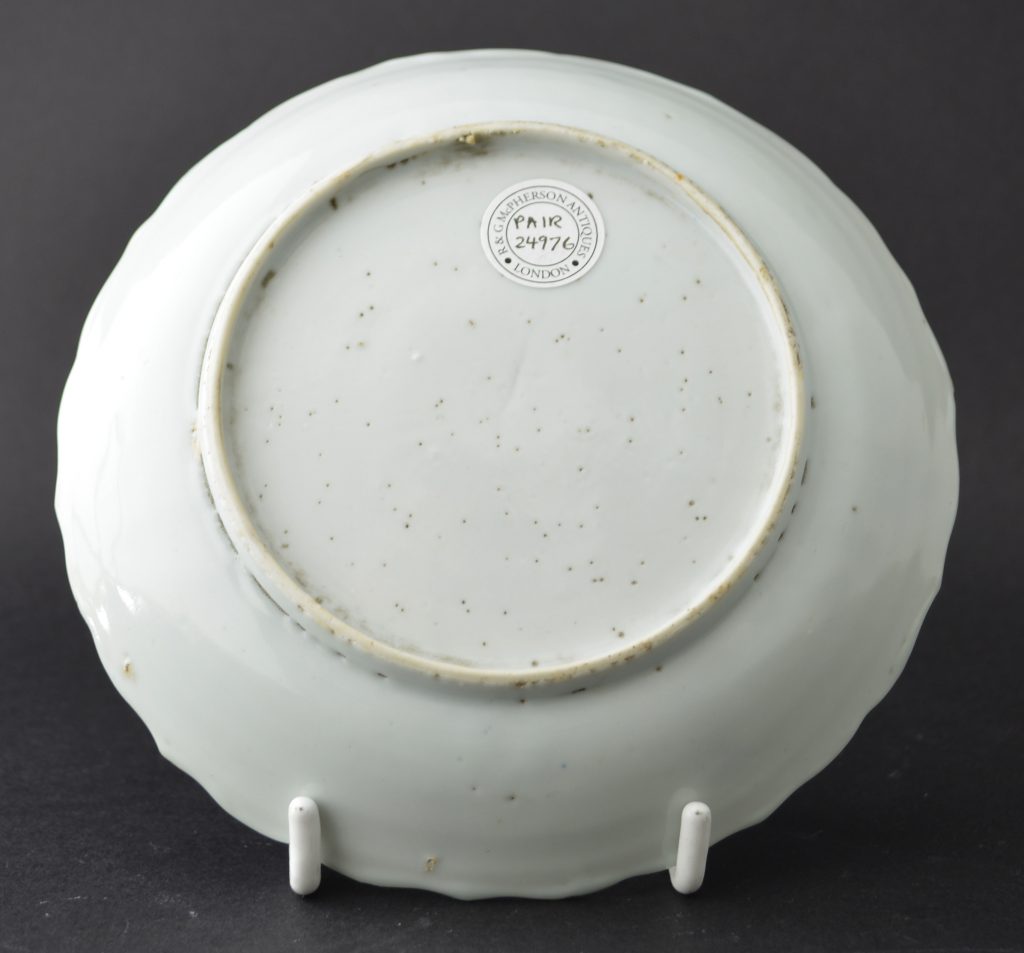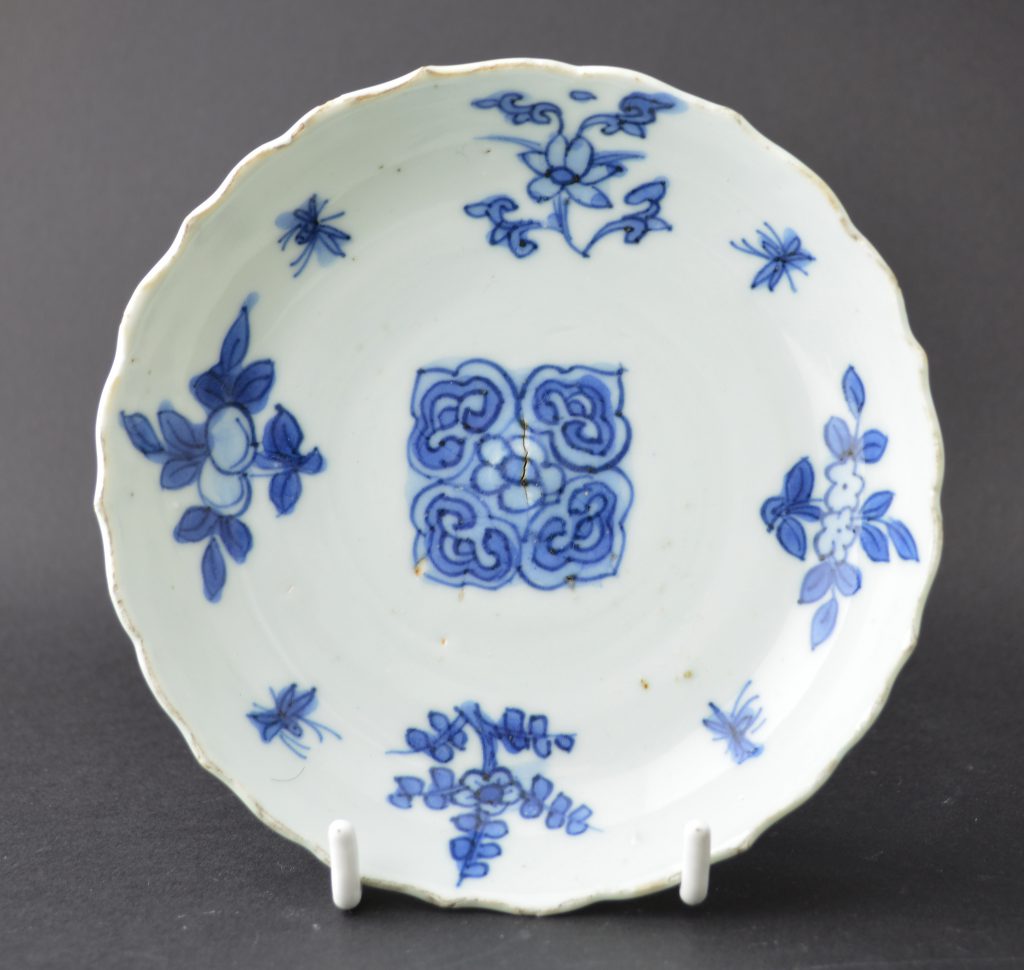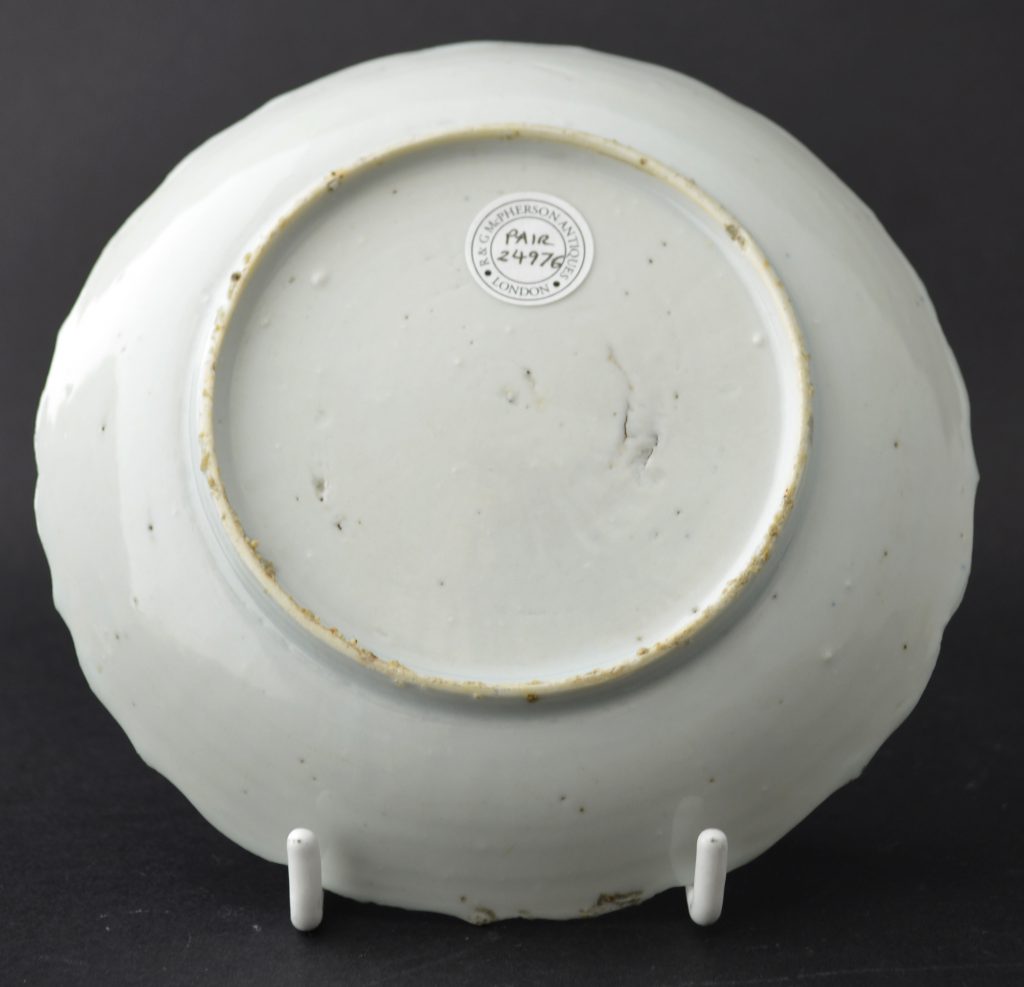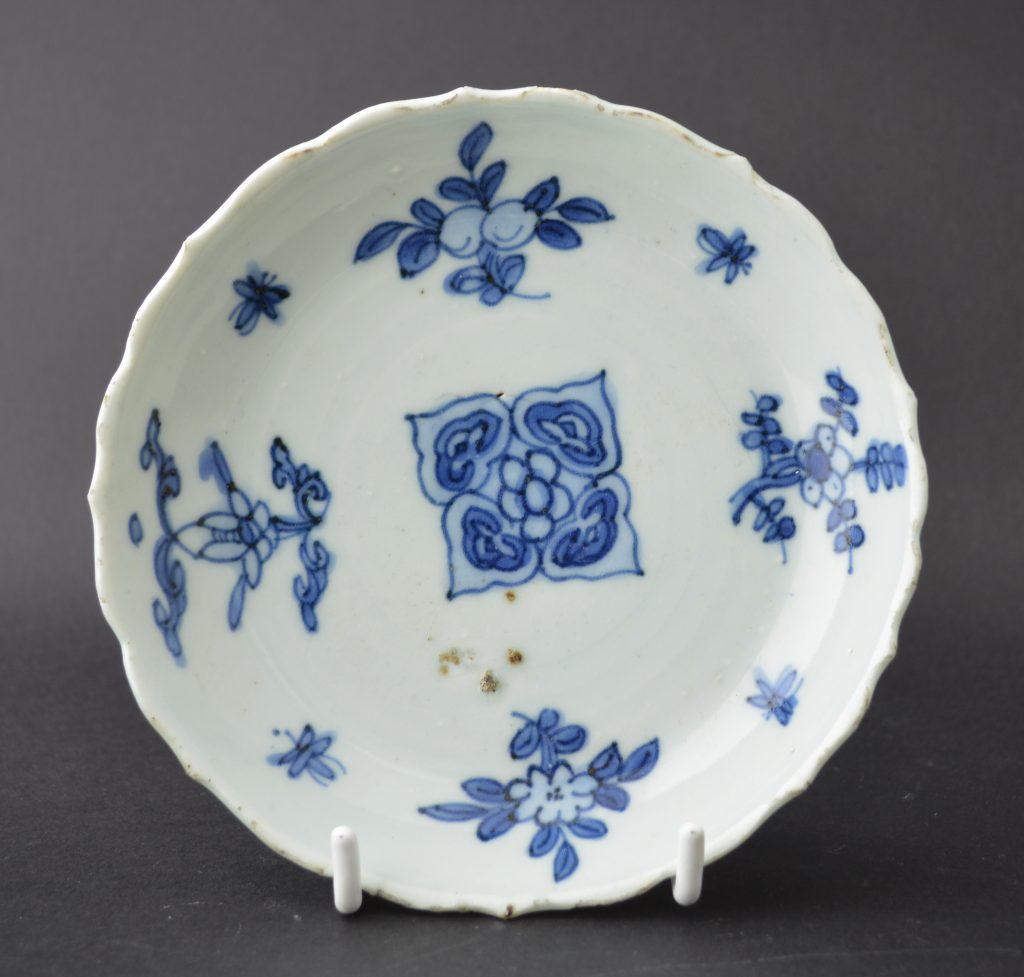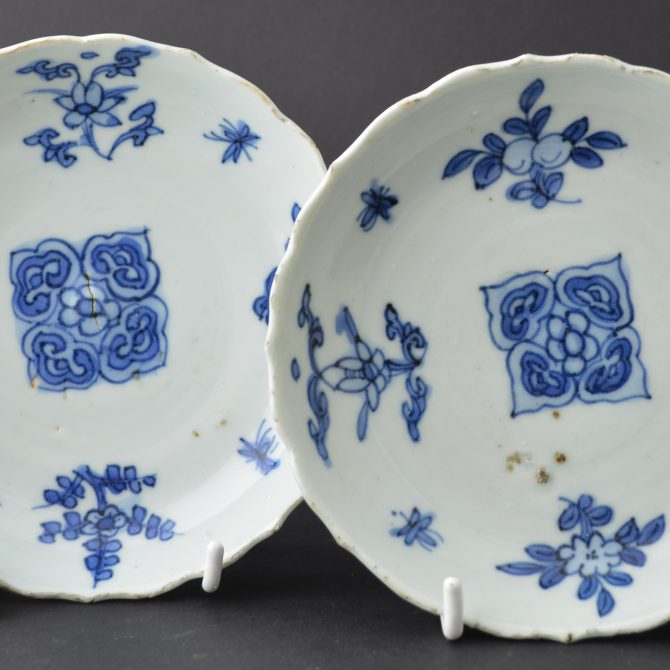
A Pair of Ming Porcelain Dishes, Transitional, Tianqi or Chongzhen c.1625 – 1640
A pair of small Ming porcelain dishes for the Japanese market, Transitional, Tianqi or Chongzhen c.1625-1640. Painted with Ruyi-Heads and flowering branches.
- Condition
- Some fritting, one with some firing grit to the glaze.
- Size
- Diameter : 13.8 cm (5 1/2 inches)
- Provenance
- From a Private English Collection of 17th and 18th Century Chinese and Japanese Porcelain.
- Stock number
- 24976
Information
Ming Porcelain for Japan :
During the late Ming Period the Chinese made a large among of porcelain for the Japanese market, it was made from the Wanli period (1573-1620) and ended in the Chongzhen period (1628-1644), the main period of production being the 1620`2 and 1630`s. The porcelain objects produced were made especially for the Japanese market, both the shapes and the designs were tailored to Japanese taste, the production process too allowed for Japanese aesthetics to be included in the finished object. Its seams firing faults were added, repaired tears in the leather-hard body were too frequent to not, in some cases, be deliberate. These imperfections as well as the fritting Mushikui (insect-nibbled) rims and kiln grit on the footrims all added to the Japanese aesthetic. The shapes created were often expressly made for the Japanese tea ceremony meal, the Kaiseki, small dishes for serving food at the tea ceremony are the most commonly encountered form. Designs, presumably taken from Japanese drawings sent to China, are very varied, often using large amount of the white porcelain contrasting well with the asymmetry of the design.
Ruyi-Head and Lingzhi Fungus Designs:
The Ruyi scepter has been an important symbol in China since at least Western Han times, its origins are still unclear, it might be Chinese but it could equally well be a Buddhist import. The Taoists believe the Ruyi evolved from the Lingzhi fungus, their symbol of immortality. Indeed the Ruyi-Head, that is the top of the scepter which curves back over the main body is often modelled as a Lingzhi fungus cloud form. Lingzhi is the immorality fungus and Ruyi means "may you have".
